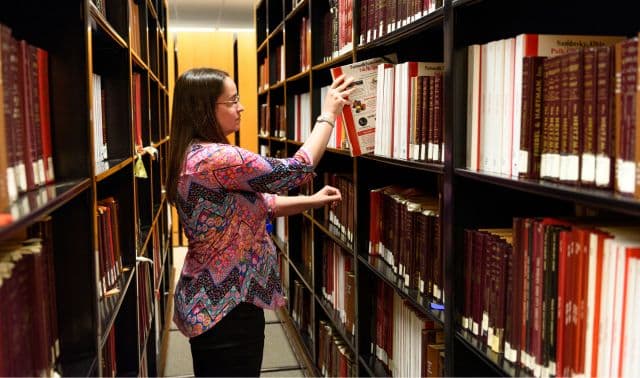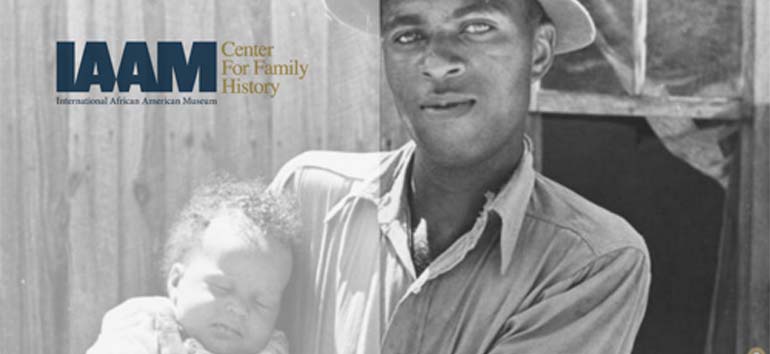Sign up for the Family Tree Newsletter! Plus, you’ll receive our 10 Essential Genealogy Research Forms PDF as a special thank you.
Get Your Free Genealogy Forms
"*" indicates required fields

No matter how convenient it may be these days to research ancestors without leaving home, you probably still dream of visiting your family’s homeland. You’re yearning to see where your ancestors lived, stand in the church where Great-grandpa was baptized, enjoy traditional cuisine and understand what life was like for your ancestors before they made the journey to America.
For more than 15 years, I imagined what it would be like to actually set foot in Milpoš, the eastern Slovakian birthplace of my maternal grandmother. I’d seen pictures of this tiny village while doing genealogy research, and watched tourists’ videos on YouTube. I thought I knew what to expect when I finally traveled there, but it turned out that my experience in Milpoš was uniquely my own. If your own bucket list includes a visit to your ancestral homeland, use my 10 been-there-done-that tips and plan the heritage trip of your dreams.
1. Plan ahead.
I planned my first trip to Slovakia 18 months in advance and my second one a year in advance. You’ll need to plan most trips well ahead of time so you can get the proper travel documents (a passport and/or visa), any vaccinations and other travel necessities. You’ll also need plenty of time to figure out the logistics of your trip. Think about what you’d like to see and do, such as explore the church your family attended or a museum that illuminates their lives. Decide what you want to accomplish genealogically: visits with relatives, cemetery explorations and library research may be on your list. Develop a plan that outlines the who, what, when, where and why of your research, and how you’ll obtain the information you want. Make a list of people—family members, a professional researcher or tour guide, a parish priest, the mayor’s office, the director of the archives—you may need to contact in advance. Then write your trip itinerary and take a printed copy with you.
To keep a trip planning to-do list organized, I like to use Evernote (free) or Living Organized (free for the iPad, iPhone and Android).
ADVERTISEMENT
2. Prepare a budget (and start saving).
Unless you’ve hit the lottery, you’ll likely have limited funds to spend on your trip. To set a budget, decide what you can afford to spend and how you’ll pay for the trip. List potential expenses, including airfare, lodging, meals, transportation, travel insurance and fees for travel documents. Don’t forget to build in incidentals, such as parking, copying costs, research service fees, snacks, souvenirs, tips, sightseeing admission fees and discretionary spending. I learned it’s usually better to overestimate than underestimate. If you’re frugal, you may even have some money left over for a future trip.
To help me save, I keep an envelope labeled “Genealogy Fund” and toss in my loose change and extra dollar bills throughout the year. It adds up, and it’s a good visual reminder of my goal to travel to an ancestral hometown. When I get $25 to $50, I put the money in a savings account so it earns a bit of interest.
For my first trip to Slovakia, I started saving about two years in advance, using money from book sales and other freelance work. My two travel companions and I shared the cost of a rental car, food and other expenses. We stayed with relatives for most of the trip, saving on lodging. My expenses were higher for my second trip because I was solo for most of it. I stayed in hotels and hired a researcher, Michal Razus, who provided transportation, and served as my guide and translator.
ADVERTISEMENT
3. Book early.
Once you decide on your destination(s), book your airline reservations and accommodations as soon as possible. If you’re going by air, start searching for fares and flight availability at least six months in advance. It pays to be somewhat flexible in arrival and departure dates so you can take advantage of the lowest fares. Remember that airfares may be seasonal, too. For example, flying to Europe may be more expensive in the summer during peak tourist season.
Use travel sites such as Kayak or FareCompare to compare flights and prices. Also sign up for low-fare alerts at Airfare Watchdog. The American Automobile Association (AAA) travel services also can offer assistance and discounts. For help, contact a travel agent who specializes in the area you want to go. You also could consider a group trip sponsored by an organization such as the New England Historic and Genealogical Society or Road Scholar, although you may not be able to customize such trips to your family history needs. Don’t forget to put in your vacation request at work (if necessary) as soon as you know your trip dates.
4. Do your homework.
Google each destination to see if the town or city has a website. I learned about Milpoš in advance of my trip. Once you know the places you want to visit, use Google Maps to plan routes so you’ll know how long it takes to get around by car, public transit (if available) or walking. Look for information about the currency, ATM availability and local laws (in Slovakia, for example, rowdy behavior is illegal between 10 p.m. and 6 a.m., so you’ll want keep the toasts and celebrating with family members in check).
You may need to make appointments to visit repositories, archives or churches. Most archives have websites; check them for hours, policies (such as a five-books-per-day limit I encountered), instructions for copying records and other pertinent information. If you employ a guide (see No. 6), he or she can help with this.
A guide also can translate for you if you’re visiting a place where English isn’t the native language. If not, and when you’re not with your guide, you’ll need to communicate with family and the staffs at hotels, restaurants and archives. You can download translation apps for your tablet or smartphone, but technology isn’t always reliable. You also can pick up the basics of the language through courses at your local college or adult education centers, or a program such as Rosetta Stone. Watching language-focused YouTube videos may be helpful, as are Rick Steves foreign language pocket phrasebooks (Italian, German, French, Portuguese and Spanish), written especially for travelers.
5. Do some genealogy in advance.
This is a relatively common scenario in my genealogy courses: A student will say he or she is planning to visit some ancestral village, and ask for advice on where and how to research “over there.” The person may even proceed to tell me the trip is in two weeks.
First, I ask how much research the person has done on this side of the ocean. You’d be surprised how many respond “none,” or “very little.”
Don’t do this. I repeat: Don’t do this. Your overseas research will most likely end in disappointment if you haven’t first learned as much as you can about your family from records they created after arriving in the United States. A colleague of mine, John Matviya, whose grandfather hailed from Milpoš, told me that during his first visit there in the 1990s, he asked a man in the village where the Matviya family lived. The man replied, “Matviyas are everywhere.”
You may think your surnames are unique, but when you get to the ancestral town or village, everyone and their brother has the same name, and you’re searching for a needle in a haystack. So arming yourself with as much information as possible before you get on the plane will help you identify your family in records, and keep you from wasting time looking for the wrong people in the wrong places.
Before you go, try to make contact with the mayor, priest or possible relatives in the village. I did this in 2010 and was able to spend two and a half days with my Alzo cousins in my ancestral village of Kucin. Use online telephone directories such as Infobel or Phonebook of the World to search for surnames and take the list with you so you can call people once you get there.
You also might find local relatives by searching for surnames and places on Facebook. If, by chance, your trip is in two weeks—maybe you procrastinated or the trip is a spur-of-the-moment opportunity—you can still make the most of your time there with a little advance research. Try searching records on subscription site Ancestry.com or the free FamilySearch.org, and running Google searches on relatives who lived at your destination.
6. Get a guide.
During my trip to Slovakia in June 2012, I enlisted the help of a local researcher to drive me to an ancestral village and accompany me to the archives. Though I was fortunate in the number of English-speakers I met, having my guide translate conversations with priests and town clerks made all the difference. Because he’d been to many of the archives, he knew to call ahead and let the staff know I’d be there to request records. While this option wasn’t cheap, it was definitely worth every penny (but I did get estimates up front and factor this cost into my planning budget).
A guide can show you around the area, navigate the archival system for you, and translate. Some even offer local research in advance, itinerary planning, and booking travel and lodging. Before hiring a guide, ask other genealogists and contact ethnic genealogical societies for recommendations. For example, I consulted the Czechoslovak Genealogical Society International has a Professional Researchers section on its website. You also can check with the Association of Professional Genealogists or Cyndi’s List.
Get cost estimates up front and clearly communicate with the guide what services you will receive. If you want his help searching for a specific record, say so: “I’m seeking the death record of my great-grandmother, Anna Figlar, who lived in Podolinec, Slovakia, and died in 1927,” or “I’d like photographs of the Patrick Sullivan family home, at X address in Galway, Ireland, as well as the church the family attended and any family gravestones in the cemetery.” Find out when and how the guide or researcher wants to be paid (for example, a deposit first and then balance due upon completion, US or foreign funds, via PayPal, etc.). Ask for a written agreement or contract detailing your arrangement and fees.
7. Set realistic goals.
If you’re a fan of “Who Do You Think You Are?,” you’re likely hoping for that amazing discovery or joyous family reunion. With any luck it could happen to you, but you may not find exactly what you’re looking for. You might make sad, shocking or unpleasant discoveries. You might run out of time: In 2010, I had time to visit only three out of four of my ancestral villages, and even then, I connected with cousins in only two of the three villages. Be hopeful that your long-lost cousins will embrace you and share with you all you want to know, but be prepared for the possibility you won’t find family living in the area or that some doors may remain closed (literally or figuratively).
One way to avoid disappointment is to learn about record losses and privacy restrictions ahead of time. That way you won’t waste time and money searching for information that doesn’t exist (such as records destroyed in a war) or is unavailable (perhaps due to privacy laws for more-recent records). Use resources such as The Family Tree Guidebook to Europe, the FamilySearch Wiki, and ask others who’ve researched in the area of interest.
8. Pack efficiently.
Give yourself a few weeks to pack so you can get necessities you don’t already have. Essentials include a sturdy suitcase, clothing and comfortable walking shoes, toiletries and other personal items, such as prescription medications (bring extra in case of travel delays). Baggage fees and restrictions can make packing for a flight tricky, so you may want to forgo bulky research binders and other heavy items. But do bring along your family tree information in some format—either digital or print—so that you can refer to it as you research.
You also may want to be selective about the electronic devices you take, because there’s always the risk you’ll lose them or they’ll be stolen. I traveled with only my smartphone, digital camera, iPad and a mobile scanner. Leave room for gifts and other souvenirs you’ll acquire during your travels.
Consult your airline for checked and carry-on baggage rules and see Transportation Security Administration regulations. If you plan to travel by train or other public transportation in your ancestral homeland, check those baggage rules, too. If possible, try to fit what you need into an airline-approved carry-on with wheels. Most airlines let you carry on one small personal item such as a purse, briefcase or laptop bag, along with a small suitcase.
9. Be flexible and have fun.
It’s tempting to overbook your itinerary in an attempt to see everything, but doing so may leave you too harried to enjoy yourself. The key is careful but flexible planning. You aren’t likely to get to do and see everything—so prioritize what’s most important to you. I opted out of an afternoon at the Presov Archive in 2010 so I could instead visit two cemeteries in my ancestral villages. I knew I could get archival records later through microfilm or online, or hire a researcher to get them for me, but figured it was unlikely I’d get another chance to walk around the cemeteries and photograph gravestones.
You’ll also need the flexibility to work with unexpected events. Build in wiggle room to rest or for prolonged family visits, emergencies or discovering relatives on the last day of your visit. During my 2010 trip, flooding affected our hosts’ business and changed my plans to visit an ancestral village. On my 2012 trip, I discovered I had a short window to visit with the parish priest in Osturna. It was in the evening I arrived in the village, and I was exhausted, but I made sure I got to view those church books.
Be especially flexible when meeting relatives for the first time—they may invite you for a meal or want to introduce you to other family members. Impromptu gatherings and meals of traditional Slovak food were among the best moments of my trips.
Keep an open mind to such surprise opportunities everywhere you go. My chance visit to the Podolínec records office connected me with cousins I didn’t know I had. I was searching for the marriage record of my grandfather’s sister, and one of the clerks recognized the family name and said she could introduce us to a descendant still living in the village. The woman we met brought out a handwritten family tree that included that sister. She had worked on it with a cousin whom we visited, and who let me scan family photographs. I’m so glad I was able to take advantage of that serendipitous moment.
10. Share your experiences.
If you get the opportunity for heritage travel, you’ll likely be anxious to share your discoveries and experiences with family members at home. Social media makes it easy: Post photographs, video and stories on Facebook, Instagram, Twitter, YouTube or on a blog. Family, friends and fellow researchers followed my blog, The Accidental Genealogist, to see pictures of Slovakia and read about my experiences.
Whether you choose to share events as they happen or wait until later is up to you, but remember that “in the moment” posting may not always be practical due to limited internet access. Plus, it may not be a good idea to let the world know you’re away from home. To capture feelings while they’re fresh, you could set up a private blog and publish posts when you get home. If you’ve got the time, savings and desire to make your dream family history trip happen, it’ll be an experience you’ll never forget.
A version of this article appeared in the December 2013 issue of Family Tree Magazine.
ADVERTISEMENT






